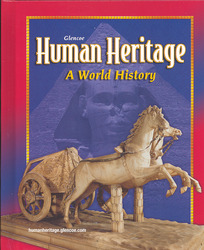
Human Heritage: A World HistoryChapter 29: The ReformationThe ReformationThe Roman Catholic Church did not adjust to the many changes taking place in western Europe during the 1400s and 1500s. Many Europeans began to call for a reformation, or a change, in the way the Church taught and practiced Christianity. Chapter 29 discusses the ideas proposed by the reformers and the Church's response to those ideas. Section 1 focuses on one reformer, Martin Luther, and why his beliefs brought him into conflict with the Roman Catholic Church. Section 2 discusses how a new religion, Protestantism, developed out of Martin Luther's ideas. The section highlights two important Protestant church ministers--Ulrich Zwingli and John Calvin who led the Protestant movement in Switzerland. Section 3 describes how Catholic reformers, including Jesuit missionaries and the bishops who met at the Council of Trent, worked to improve their church and to reform and defend Catholic teachings. Section 4 discusses how and why the reformation of the Church of England came about, resulting in a mix of Protestant belief and Catholic practice. Section 5 explains why Europeans became involved in religious wars between Protestants and Catholics. The English defeat over Catholic Spain allowed northern Europe to remain Protestant. The Edict of Nantes made France the first European country to allow both religions to exist side by side. Section 6 focuses on the Thirty Years' War that was fought among the German states and its effects on Europe. The war was the last that Europeans fought over religion. A map details the religions of Europe in 1560. |  |















